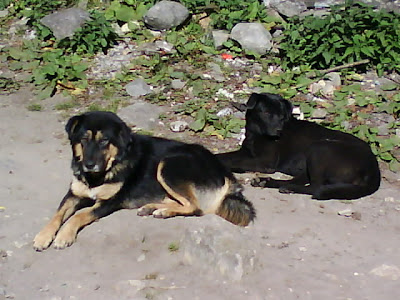Well in fact I arrived at the check-in counter few minutes past 5 am. I immediately asked for Mr. Sharul who on Saturday morning assured me he would re-schedule me on today’s flight.
10 minutes later I was on the way to the boarding gate. It was a great relief to receive a message from Mee Poon saying that on their way to Besishahar, where we were supposed to start our Annapurna Circuit trek, they would pick me up at the Kathmandu Airport. In that case, despite being two days late, I wouldn’t miss anything after all on the trekking part.
In the plane I talked to two Nepalese migrant workers returning home for Deepawali. Nepal’s countryside that continues to drive their young males out to Malaysia to seek low-paying jobs. I guess it was for the same reasons that our forefathers from the south coast of China left home to work as miners and tapers in the South Sea i.e. today’s SEA countries.
By They have been away from home working in Malaysia for almost 3 years. One has a son whom he has not seen. They gave me some ideas about joblessness and poverty in and by we flew into dawn over what looked a sprawling estuary settlement marked with meandering tributaries and ponds and lakes. It could be the Ganga Delta.
Over the right wing of the plane I could see a long narrow band of wooly clouds floating steadily on the horizon. On these clouds was a chain of silvery white objects with angular edges. It occurred to me that those could be the mighty Himalayans awakened from their slumber.
There were few lights on the ground, compared to those I had seen in other cities. However from high up in the air Kathmandu was an awesome picture of a sprawling city over hills and valleys.
Upon arrival at Tribhuvan International Airport I rushed to get my visa done in less than 10 minutes and then I scurried out of the building to look for my teammates. I didn’t see Mee Poon or any group of persons looking like my team. And so I got one of my new Nepalese friends to contact Mee Poon who had just arrived at the airport.
I was soon greeted by waving hands stretching out of a small bus packed with my fellow trekkers. I offered them my thousands of apologies. They all clapped hands to welcome me on board. No giggles. Nor any laughing out loud.
Out of the Airport our rickety bus run on Kathmandu’s dusty roads lined with disorderly shop-houses. Rubbish and garbage everywhere. On every pavement were hawkers and vendors selling vegetable, household items and whatever else. Trucks, buses, motorcars, trishaws and bicycles were being recklessly driven about. It surprised me that this heavily polluted capital city could look so scenic from the sky.
Our bus found its way up and up out of Kathmandu Valley and then down and down to Besisahar on roads crawling along spurs and slopes that plunge steeply into the narrow valley below. Farms and houses amidst lushly green trees and grass were everywhere up and down and around those slopes. Mostly earth roads spread like tentacles across hills and ridges and terraces grown with yellow paddy. [The same idyllic scene is to appear again and again everywhere along our trail in the remote mountainous regions.]
We came across oncoming trucks and buses all fully packed and overcrowded, with tens of mostly youngsters sitting on top. They were apparently unmindful of any potential mishaps that may occur to them.
It seems that during the 3 days of Deepawali rural folks are allowed to travel in this manner. The same goes the day immediately after the Deepawali period. All these are special arrangements allowed so that rural folks from the hilly interiors could congregate in the Kathmandu Valley temples for religious celebrations and after that disperse from there to go back to the hills. It makes good sense. In a country so lacking in public transport how else can you make your faithful and festival-loving devotees happy and contented?
At about 4 p.m. we arrived at Besishahar, a small rural single-street town from which we would start our expedition tomorrow. We checked into a singular modern building known as the Mongolian Guesthouse.
After dinner, our guide Chandra introduced two Sherpas Citra and Roshan and 5 porters all from the Gurung clan. Although small in build they looked tough and hardy.
Not much other information was given to us.[ In reality the journey turned out to be one that needs a lot more information for trekkers to be well prepared.]
























































